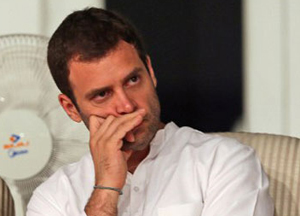 Srinagar, Oct 25: With Rahul Gandhi claiming that there is intelligence that Pakistani agencies were approaching victims of Muzzafarnagar riots, BJP today said the Home Minister must answer that in what capacity intelligence officials are briefing the Congress MP.
Srinagar, Oct 25: With Rahul Gandhi claiming that there is intelligence that Pakistani agencies were approaching victims of Muzzafarnagar riots, BJP today said the Home Minister must answer that in what capacity intelligence officials are briefing the Congress MP.
The party criticised the Intelligence Bureau (IB), asking how can it brief a Member of Parliament or a party office bearer.
"In what capacity is the IB briefing Rahul Gandhi? He is just an MP (Member of Parliament), we are MPs too. He is a party office bearer, we are party office bearers too.
IB does not brief our party bearers, how can they brief him. He is not the Prime Minister or a Home Minister," BJP national spokesman Prakash Javadekar told reporters here.
The BJP leader said the Home Minister must answer that what action the government took on such IB inputs.
"If Rahul Gandhi is saying that ISI is in touch with the youth in India, what action is the government taking? The Home Minister must answer.
"If these are the IB inputs, the Home Minister owes an explanation on Rahul Gandhi's revelations about the IB inputs. This is very serious. We can't take politics today to that level where Congress wants to take it," he said.
In a public rally in Indore, Gandhi had claimed that intelligence agencies in Pakistan were approaching some victims of the Muzaffarnagar riots to lure them into terrorism.
He said he had been told by an intelligence official that as a consequence of the alleged communalisation in Muzaffarnagar, there was a group of 10-15 Muslim youngsters, whose kin were killed, with whom intelligence agencies of Pakistan have established contact.
Javadekar said Gandhi's comment is an "insult" to Muslims of the country and the minority community is pro-India and not in favour of Pakistan.
"Rahul Gandhi is free to go anywhere for election campaign, but he is not free to insult Muslims of the country. His statement is wrong. The Muslims in the country are pro-India. They are not in favour of Pakistan. This amounts to insulting people," he said.





Comments
Add new comment